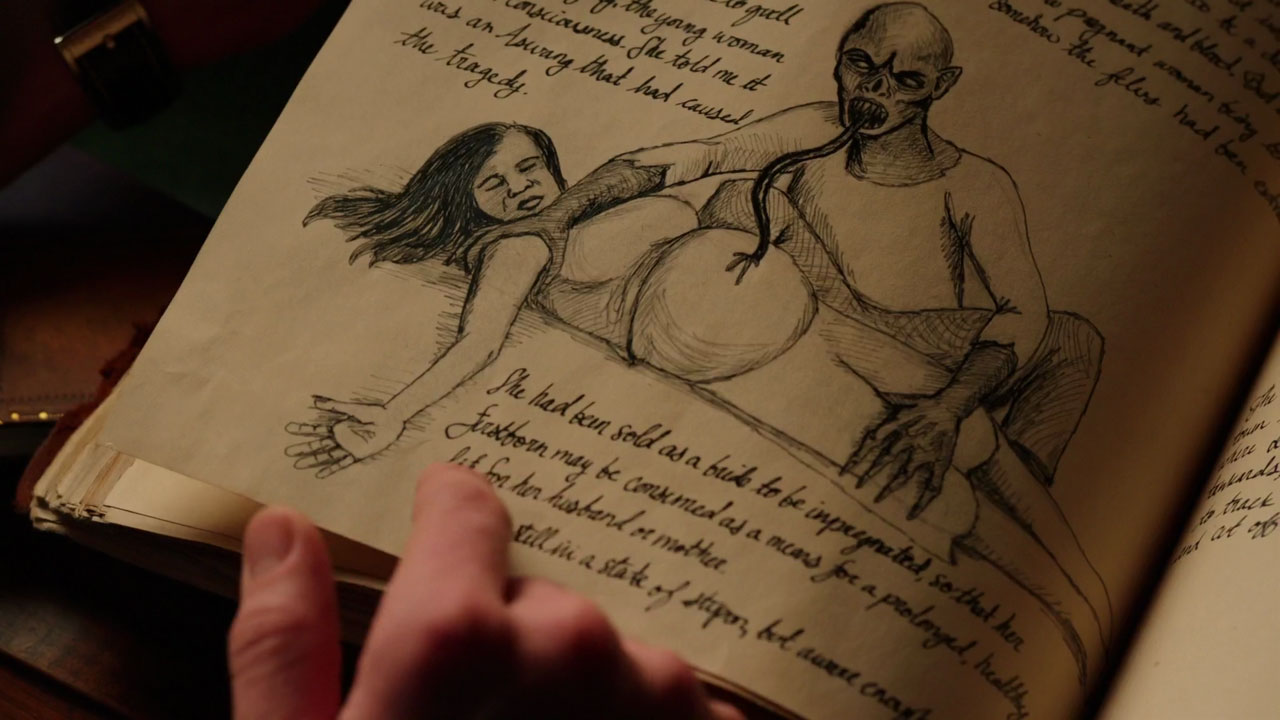8 Depictions of Pinoy Monsters in Foreign Entertainment
Oct 23, 2015 • Karl R. De Mesa

Oct 23, 2015 • Karl R. De Mesa
With utter strange exoticism and deadliness to spare, the appeal of our Lower Myths bestiary has been inspirational fodder to many foreign entertainment media.
Here’s some of them from games to comics, TV series to movies, which prove that the aswang (taken in its many vampiric forms, liberties for dramatic purposes or just because) is still one of the best Pinoy exports we have in terms of our supernatural diaspora.
Advanced happy Samhain, brothers and sisters of ze night.
Some humblebragging to start this list off: I worked as a script and supernatural consultant on this made-for-export animated series sometime in the late-noughties under Creative Media Ph (CreAm) animation studio. Featuring former supermodel Bessie Badilla and her daughters in the role of reluctant aswang nobility, the ambition, narrative scope, and slick production of this project and the talents behind it can be seen in the trailer—especially in the mostly English dialogue. Albeit made by a local company, it counts for this list since it was initially not meant to be shown to Pinoy audiences. Although I’ve heard the graphic novel manga version was already released (and where is it available?), sadly, I have no idea why the animated version didn’t push through—it’s been, what, seven years?.
As a tribute to its sizable Pinoy population, Level-Up games made a dedicated server where the players could sail to a small village called Port Malaya southwest of the Alberta map. There, they could battle fierce native lower myth creatures. Though I’ve never played RO, veterans of the now-defunct game say the server was full of Tikbalang, Giant Bungisngis, gargantuan Bakonawa dragons, and the odious Jejelings to test your mettle against.
Every fan of Canadian urban fantasy series “Lost Girl” agrees episode 10 of season three was a bummer episode which reduced the mighty horse warriors of Pinoy myth to a nuisance fae creature that looks more like a low budget swamp thing in a huge green body wig than anything resembling an actual horse. While the North American pronunciation of “teek-bah-lahng” is guffaw-inducing, the easy target of another character mishearing the name and saying: “A what? A tickle-bang?” is just cringe-worthy.
Filipino-American “Grimm” star Reggie Lee goes up against a pretty well-made and decently-depicted viscera sucker in the “Mother Dearest” episode of the hit US modern fairy tale series.
Filipino-Canadian Bustos has done a lot for the popularization of Pinoy culture in North America, and on this song, the “Canadian Idol” star puts his rhyme to work for the duwendes, tikbalangs, and kapres.
This Image comics series by Todd Dezago and Craig Rosseau about a group of supernatural investigators called the Perhapanauts (who are supernatural creatures themselves) go up against an aswang in the first volume’s issue number four. Pretty spot-on gorgeous art!
“They’ve come to feed on the unborn!” A must-watch for cult video aficionados, the movie isn’t set in some isolated Philippine province but in rural Wisconsin and was an official selection for the Sundance Film Festival in 1994.
The story revolves around unwed and pregnant American girl Kat, who, unwilling to have her baby aborted, contacts a family for adoption (a couple whose wife is barren) once her baby is born—the Pinoy connection here is that the family of the couple, Peter and Janine Null, had spent time in the country and brought back to the US something more than just Goldilock’s pastries.
While a lot of liberties are taken with the ecology of the aswang, it really is a pretty decent B-horror vampire movie.
The gold standard of foreign-made Pinoy mythology entertainment is still the documentary made by enterprising Canadian director Jordan Clark. With exhaustive, deep research, an approach that is almost military in precision, and true respect for, and grasp of, the Pinoy zeitgeist, Clark’s documentary delves into the ecology, reach, and cultural impact of the aswang myth on modern Filipinos.
Do you know you can trace the roots of the aswang fable to a disease endemic to Capizenos? You can find out by watching this film. The texture and beat of the docu already rivals some work from Discovery Channel or the History Channel, but who knows how much more he could have accomplished with a bigger budget? Educational AND captivating, every Pinoy interested in the facts behind out myths should watch this. Also, Clark just released the follow-up to this docu, a six-part series about other popular Pinoy monsters.
Karl R. De Mesa is a journalist and writer who co-hosts the combat sports podcast DSTRY.MNL and the dark arts and entertainment podcast Kill the Lights. His latest book is "Radiant Void," a collection of non-fiction that was a finalist in the Philippine National Book Awards.
Input your search keywords and press Enter.
